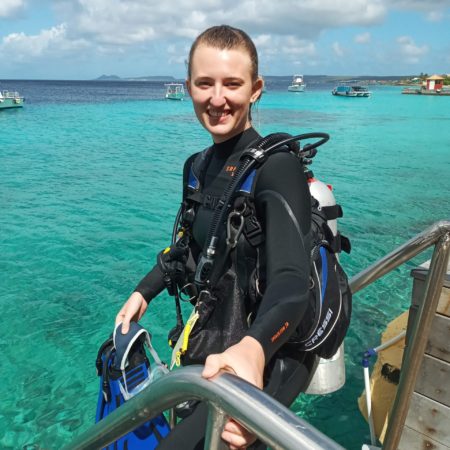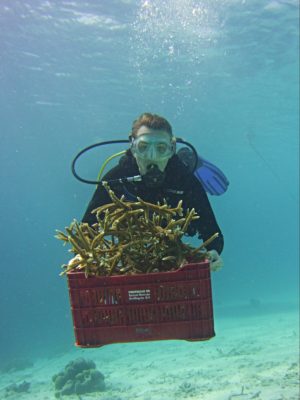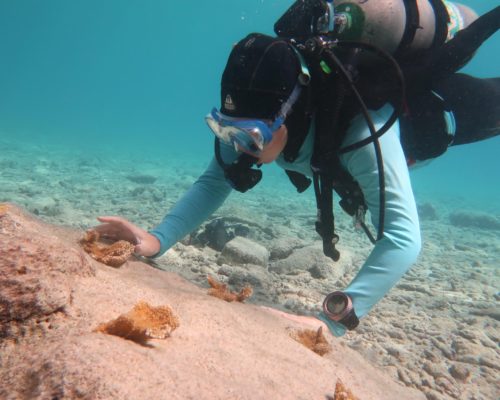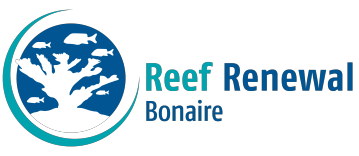Reef Renewal Internship
For the first time in over a year, the Reef Renewal Foundation welcomed two interns back to help the effort again. In this blog post, they would like to share their experiences from the past three months while working with us. Cheyenna has just graduated from coastal and marine management in the Netherlands and wanted to be an intern with us to get some more experience in coral restoration before starting her master’s in marine biology. Sedona, is in her third year Environmental Studies in the USA. This internship has given her a lot of knowledge and practical experience in marine conservation.
Starting an internship during a global pandemic can be quite challenging. After a lot of cancelled flights, testing, and health declaration forms, we arrived on the island of Bonaire. Despite the pandemic, the coral reefs of Bonaire are still facing their own challenges and restoration work must go on! The first few days of our internship included getting to know the staff, completing the Reef Renewal Diver specialty training, and of course exploring the coral nurseries and outplanting sites, which are right in front of the office. In the very first week of our arrival, we outplanted 150 staghorn corals, which made us feel proud as we were already making a real difference.


We would often start the day diving. These dives can be cleaning the nursery, propagating and hanging or outplanting staghorn and elkhorn corals. In the beginning we really noticed a big difference between just doing a fun dive to explore the reef versus working underwater, where you really become a better diver out of necessity. It is extremely important to master the act of stillness and buoyancy to prevent, for example, any kicking the coral you just outplanted.
When we are working, we are usually very focused on the task that we are doing at that moment, but occasionally, we still would get fun visitors to the nursery, like turtles, rays, and all different kinds of fish. Some of the fish are quite cheeky and will try to steal an algae snack while we are cleaning the nursery, they can also be quite stubborn and get in the way. The afternoons consist of mostly land-based work like preparing materials, making new trees and tags, or helping the staff with other tasks, like helping with the monitoring program and data management.


One of the things we liked the most is the way that we are involved in so many aspects of the process and project. From the moment we arrived, the staff were very welcoming, and they not only included us in the restoration work, but they also involved us in the Foundation’s daily operations, as well as allowing us to help with the promotion of the foundation through videos, photos, and blogposts.
All the staff members are always open for questions or a chat to share their knowledge about coral restoration, life on the island, and diving in general. For example, we had a very detailed talk with Francesca about buoyancy skills and how to become better and more self-assured divers. This has made us much more comfortable and confident underwater, which then helped us do our work more effectively and efficiently.
The only thing about the internship that the pandemic did effect was the interaction with the volunteers and the community. Normally, a good amount of volunteers helps out on the dives and there is a lot of community outreach, but this interaction has been limited for everyone’s safety. Luckily for us, we still had a really great learning experience and hopefully we will be able to continue improving our coral restoration skills in the future. We walk away from this internship as experienced restoration divers, with the opportunity to share our knowledge and continue our passion for the ocean and coral reefs!
Are you interested in our internship program? Find more information here



